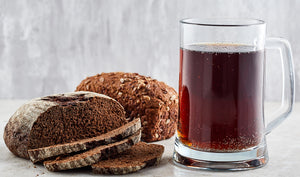Why Use a Yeast Starter?
Making a yeast starter can be the difference between good beer and a great beer. A yeast starter is essentially a small batch of un-hopped beer fermented for a few days. This makes the yeast multiply, become stronger and gets them pumped up for their next big job (making your beer). This will lead to a cleaner fermentation which, of course, will result in a clean overall beer. Pitching too little yeast cells means that your yeast will have to work harder to finish off the beer, which can cause off flavors and/or lead to under attenuated beer.
What You'll Need
- Water
- Yeast
- Dried Malt Extract (DME) (or for an easier yeast starter, use Propper Starter)
- Erlenmeyer flask
- Stove/burner
- Bung
- Airlock
- Tinfoil
- Stir plate
How Do You Make One?
Making a yeast starter is easy! The basic rule of thumb is 1 g of DME (Dry Malt Extract) per 10 ml of water. This should get you a gravity reading of about 1.040 which is perfect for a starter. A 900 ml (per 5 gallons) starter will work great for most beers with an SG of about 1.050 or under. Anything over 1.050, you may want to use a 1200 ml starter to get a higher pitch rate.
- Mix 900 ml of water with 90 grams of DME into a Erlenmeyer Flask. *If using a can of Propper Starter, just mix the contents with 16 oz of water and skip steps 2 & 3.
- Bring the mixture to a boil for a minimum 5 minutes to sterilize.
- Cool wort down to somewhere between 65°F (18°C) and 75°F (24°C) by submerging the flask into cold water (similar to an ice bath).
- Shake vigorously to introduce oxygen to the wort.
- Pitch yeast into your wort and plug with bung and airlock or simply wrap some tinfoil around it.
- Allow your starter to sit for 2-3 days stirring as often as possible (a stir plate is recommended for this step).
- Pitch your yeast starter into your freshly brewed wort.



